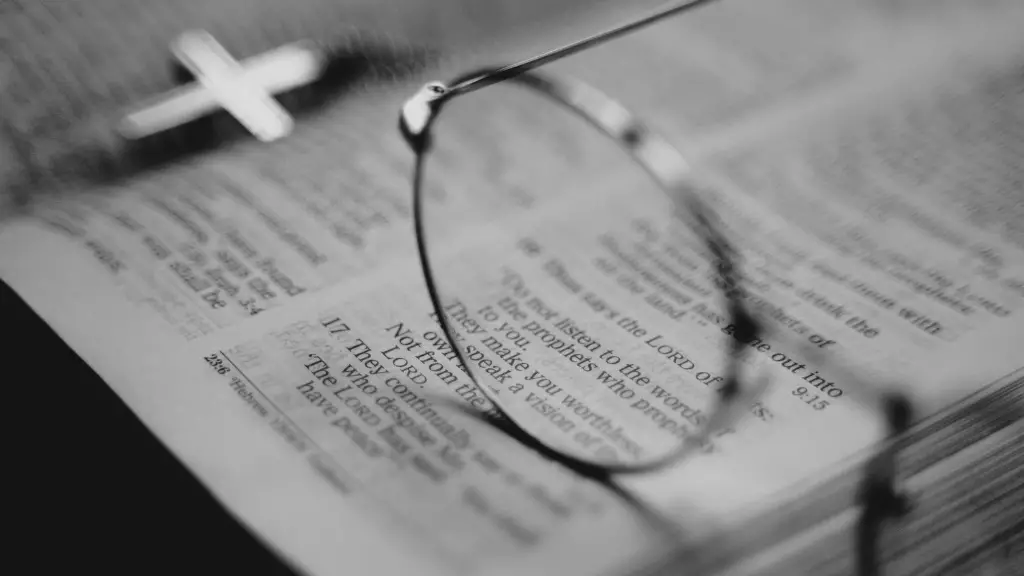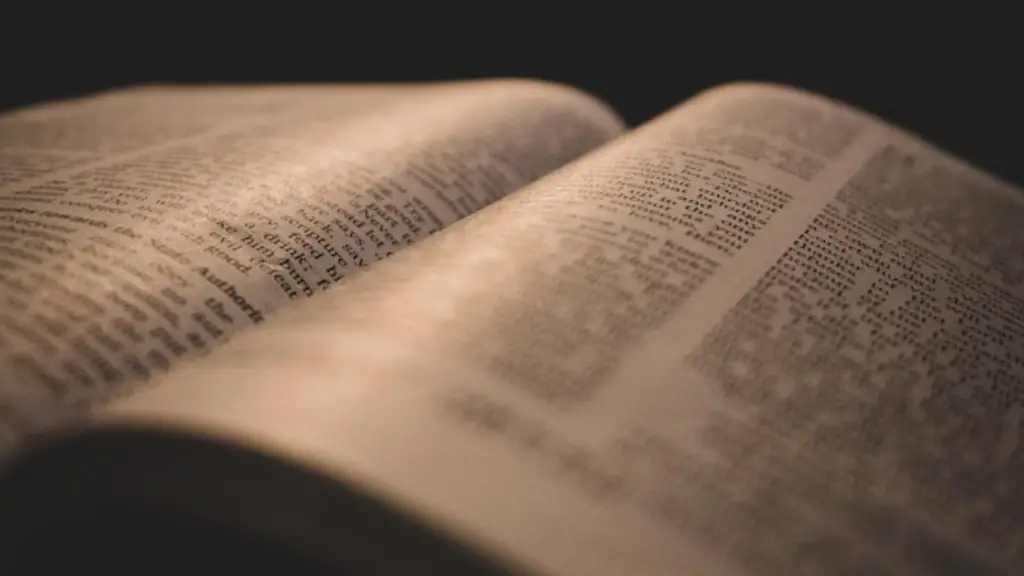Mythology
In traditional folklore, unicorns are white horses with a single horn growing out of their head – but are unicorns mentioned in the Bible? The answer is not as simple as it seems. While the Bible does not describe a one-horned mythical creature, it makes several references to a creature possessing some of the features typically associated with modern day unicorns – that is, a strong, single-horned animal.
The first mention of the unicorn in the Bible appears in the Book of Job, where the Creator states, “He maketh the wild animals to approach, and the wild bull and the unicorn do obey him” (Job 39:9). The Biblical scholar Matthew Henry notes this creature is believed to represent the “Behemoth”, which is described in other verses as having huge strength and a single horn.
In Numbers 23:22 and 24:8, the word “unicorn” appears again, with the creature described as being strong and ferocious. This has led some people to assume that the unicorn of the Bible is similar in appearance to the modern day unicorn. However, Talmudic commentaries have suggested that this creature could have either been a two-horned animal, such as an ox, or a monoceros, a mysterious one-horned creature described by the ancient Greeks.
Another reference to a unicorn-like creature appears in Deuteronomy 33:17, where the Creator proclaims the descendants of Joseph will possess “the firstling of his herd, and between his shoulders” – suggesting the presence of a one-horned animal. Many Biblical scholars interpret this passage as meaning the descendants of Joseph will possess a unicorn, as the only creature capable of bearing its horn between its shoulders is an animal with a single horn.
While these passages appear to establish the presence of some kind of one-horned animal in the Bible, their interpretation is open to debate. In fact, the earliest translations of the Bible used the word “rhinoceros” instead of “unicorn”, suggesting that the creature mentioned was not a mythical white horse but a large, heavily-armored animal with a single horn.
Scientific Evidence
Recent scientific evidence has suggested that unicorns could, in fact, have existed. In 2016, a fossilized jawbone was discovered in Northern Siberia, which many scientists believed to belong to a real-life unicorn.
The fossil, which dates back 29,000 years, belonged to the Elasmotherium sibiricum, an extinct species of large mammal believed to resemble the legendary unicorn. Although this species is believed to have roamed the Earth as recently as 39,000 years ago, it is likely to have died out long before the appearance of humans.
Mystical Meaning
In addition to its literal sense, the unicorn can also be viewed as a symbol with a much deeper meaning. Many experts believe that this creature is a representation of the divine, pointing to its frequent association with purity and goodness.
Unicorns often appear in Christian literature, particularly during the Middle Ages, and have been used as a metaphor for Jesus and His eternal love for mankind. What’s more, the Bible itself makes several references to a creature possessing some of the features typically associated with unicorns — that is, a powerful, single-horned animal.
Popular Beliefs
The idea of unicorns can be traced back to ancient Greece, where the philosopher Ctesias wrote of a magical beast with a single horn growing out of its forehead. Since then, tales of the magnificent creature have continued to appear in literature, art and folklore around the world.
The association between the unicorn and mythology increased drastically during the Renaissance, with many people believing the creature to be real. This led to a surge in unicorn-related merchandise, including jewelry and books.
In the 20th century, the popularity of the unicorn significantly increased, with the creature appearing in many books, movies and media. The unicorn has since become an integral part of popular culture, inspiring books, movies and games.
Present Day Connotations
In recent times, the unicorn has become a symbol of freedom, hope and innocence. Many people believe the creature to possess fantastic qualities, such as wisdom, courage and healing powers.
The unicorn has a special place in the hearts of many people, with the creature often being seen as a representation of faith, hope and optimism. Many use the creature as a spiritual guide, believing it will help them find their true calling in life.
This connotation has become more prominent in recent years, with the creature becoming a popular symbol for modern day feminists, LGBTQ+ people and other social movements.
Psychological Significance
The idea of the unicorn has been used by psychologists and psychiatrists to explain the psychological significance of this creature. According to some experts, the unicorn can be seen as a symbol of emotional growth and healing.
The creature’s unique horn can symbolize the ability to tap into one’s inner wisdom, while its majestic appearance can mean that one is capable of turning their dreams into reality. In this way, the unicorn can be seen as a representation of the power of the human mind.
Some experts believe that the unicorn can also represent inner strength and resilience. The creature’s solitary nature is thought to represent the power of standing up for oneself and showing courage in the face of adversity.
Religious Significance
Apart from its scientific and psychological significance, the unicorn also has deep religious significance. The creature has been mentioned in many religious texts, including the Bible, and its association with purity and goodness has made it a symbol of faith for many.
In Judaism, the unicorn is seen as a symbol of protection, with the creature’s horn said to protect its possessor from harm. In Christianity, the unicorn is seen as a symbol of Christ – its purity reflecting the essence of Jesus and its single horn being interpreted as a metaphor for the power of faith.
Cultural Significance
Throughout history, the unicorn has been an important symbol in many cultures and religions. In the Chinese culture, the unicorn is seen as a symbol of wealth, success and harmony. In Europe, the unicorn is seen as a symbol of good luck, fertility and beauty.
In modern day society, the unicorn has become a popular symbol in popular culture, inspiring books, movies and even music. From television series such as “My Little Pony” to hit singles such as “Unicorn In The Sky”, the creature has become an integral part of popular culture, inspiring people of all ages.
Symbolism In Art
The unicorn has been a powerful symbol in art for centuries. From European tapestries to Japanese prints, the creature has been a popular source of artistic inspiration throughout history.
Unicorns often appear in paintings and sculptures, with the creature’s mythic beauty captivating the imagination of many. One of the most famous pieces of art featuring the unicorn is “The Lady and the Unicorn”, a 15th century tapestry which features a white unicorn being approached by a maiden.
In modern day society, the unicorn continues to be a popular subject in art. From abstract art to graffiti, the creature is often used as a symbol of hope, freedom and innocence – traits which have made the unicorn an inspiring muse for many.


